Introducing dogs to each other for the first time can be an exciting, but stressful event for all involved. Luckily, with a solid plan in place you can help things go smoothly and facilitate a lifelong friendship.
The more you know about each dog’s personality, the better equipped you will be to anticipate their reactions to one another and prevent an unfortunate encounter.
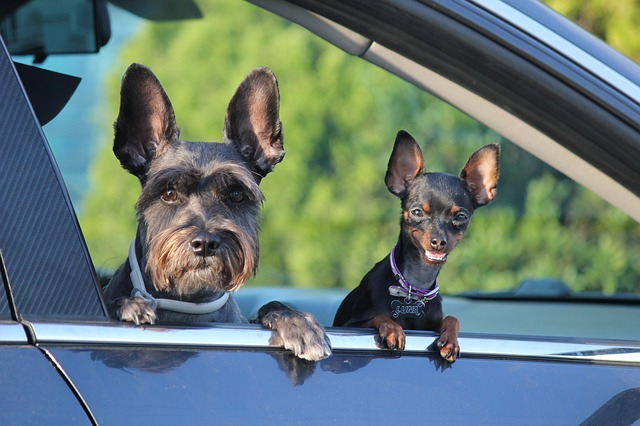 Worrying over how to introduce dogs to each other? We’ve got tips!
Worrying over how to introduce dogs to each other? We’ve got tips!
If both dogs are easygoing and social with other pups, introducing them should be smooth and uneventful. However, if either dog is not highly socialized or has a history of trauma, the meeting will require more care and effort. The following tips will help you take this vital step towards expanding your furry family with confidence.
1. Start introductions on neutral territory.
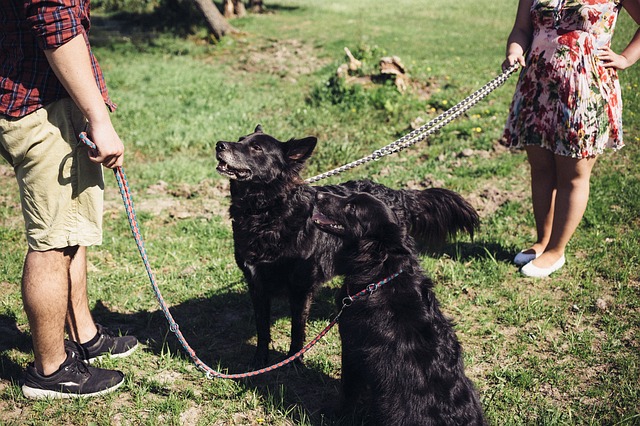 Neutral ground is a must when introducing dogs.
Neutral ground is a must when introducing dogs.
Owners often make the mistake of bringing home a new dog and marching him right through the front door onto another pup’s turf. Allowing one dog to have the “home court advantage” is unfair and can lead to territorial fights.
Instead, decide on a neutral location like a neighbor’s yard or park for the first encounter. If you are adopting a dog from a shelter, the staff may encourage a meet-and-greet with your existing dogs to ensure they are a good fit. Although a noisy, hectic rescue center is not the ideal location for an introduction, the staff may be able to help you make the best of it. If either dog has a history of trauma or aggression, you may want to hire a professional trainer to help you.
2. Pay attention to body language.
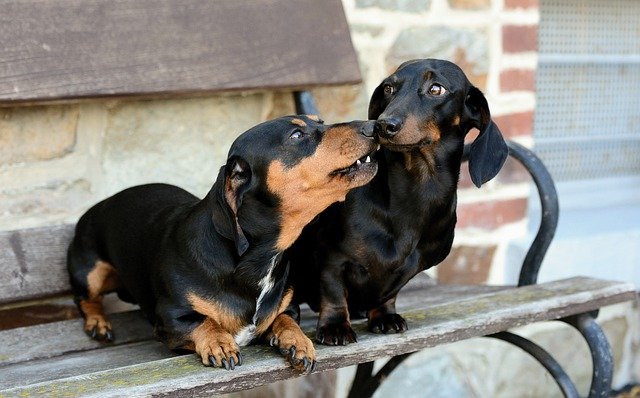
Look for the little signs of body language.
Much can be learned by simply watching the body language of dogs. When it comes to introducing two dogs to each other safely, dog parents can keep control of the meeting by paying attention to how the dogs are behaving. Obviously, tail wagging while wearing a puppish smile is a positive sign, while growling or snapping speak of a scared or angry dog.
But, subtle signs of the body can be missed. For example, let’s examine the tail wag. We know a super speedy wag means excitement. A leisurely swing of the tail with some hip wiggling signals happiness and friendship. But, the fast wag of a tail held in a vertical position means a dog is feeling nervous or even aggressive.
3. Take a walk together.
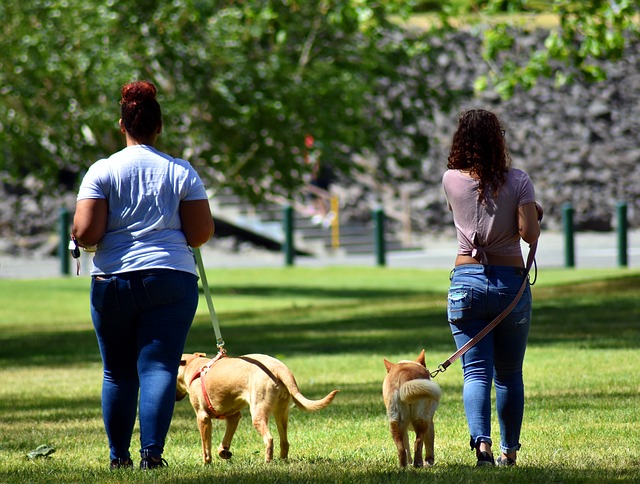 Walks are a great activity when introducing dogs to each other.
Walks are a great activity when introducing dogs to each other.
Take the dogs on a walk together, keeping a safe distance between them to prevent the leashes from tangling and the dogs from greeting each other just yet. This will help them relax and adjust to each other’s presence. The goal of this step is to release some nervous energy and get the dogs feeling calm and happy around each other.
Both dogs should be on sturdy, non-retractable leashes handled by calm, relaxed adults. Try to keep the leashes slack as you walk. Tension or tightness may translate as stress on your part and cause the dogs to become anxious in response.
4. Initiate a short, monitored play session.
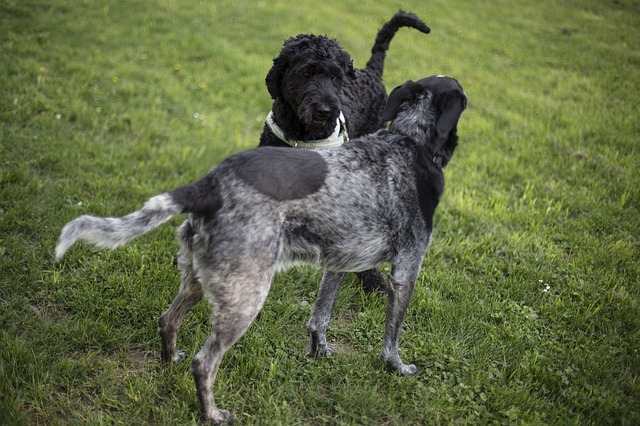 Lots of space is important for a first playtime.
Lots of space is important for a first playtime.
If the dogs have made it this far without lunging, growling or showing signs of distress towards one another, you can proceed to the actual introduction phase. It may seem counterintuitive, but it is best to drop the leashes and allow a bit of freedom here. Take them to a large, enclosed area like a fenced yard or quiet park – the more space, the less tension there will be.
Drop their leashes, resist your urge to micro-manage, and allow them to investigate each other. As they approach, watch their body language closely. They may puff themselves up or even vocalize a bit, but neither dog should appear frightened or overly aggressive. Pay close attention to the small details to get a sense of how playtime is going when introducing dogs for the first time.
Give them about two or three minutes to get to know one another without interference. Even if they are playing and getting along well, it is best to end these initial sessions on a positive note!
5. Move the encounter inside the home.
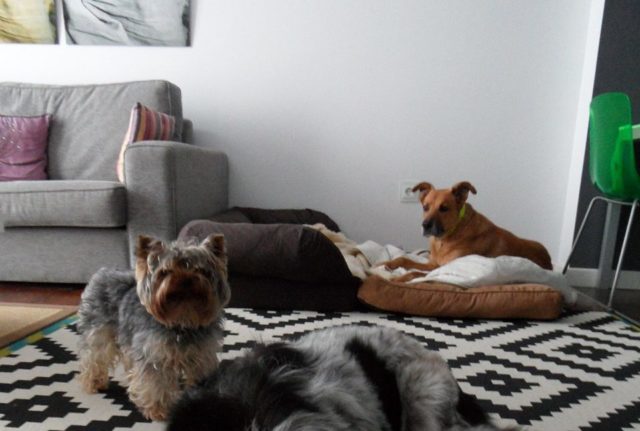 Keep everyone happy and safe by giving your new dog a secure space all their own.
Keep everyone happy and safe by giving your new dog a secure space all their own.
If you have started the introduction at a neutral park or pet store, be sure to transport the dogs home in separate cars or separate crates to prevent unnecessary tension in the confined space of your vehicle.
Once at home, allow the new dog to enter the house first so he can explore the space without the resident dog interfering. Make sure all treats, toys, food bowls and bones are out of reach and out of sight to prevent possessive conflicts. Be sure to feed them and give them treats separately until they have developed a secure relationship.
Set the new dog up with a safe space blocked off from other pets and family members so he has a place to decompress when feeling overwhelmed. Keep each interaction between the two dogs short and pleasant and separate them immediately if tensions arise.
6. Keep them separated while you are away.
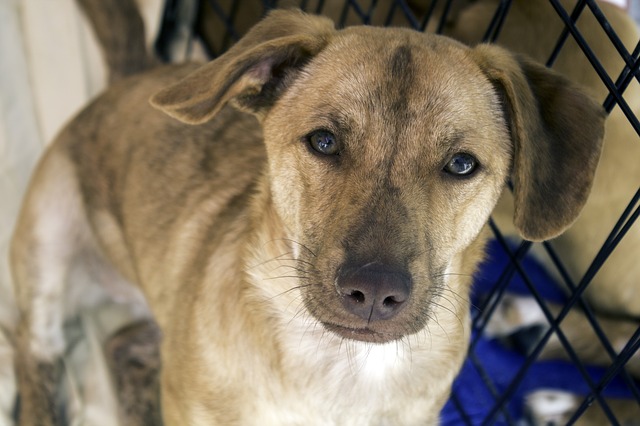 When you’re not home, keep dogs separated when until you know they’ve become the best of buds.
When you’re not home, keep dogs separated when until you know they’ve become the best of buds.
Crating or confining your new dog to a safe area is a good idea regardless of the other pets in the home. Dogs are more likely to suffer from separation anxiety during the initial days and weeks in a new home which could lead to chewing, house soiling or excessive barking.
With the new pup already under stress, keeping the dogs in separate rooms or crates is the safest choice to prevent fighting and injuries when you cannot be home to monitor them.
7. Address good and bad behaviors.
 Like all siblings, dogs will squabble too, but most times they solve their own issues.
Like all siblings, dogs will squabble too, but most times they solve their own issues.
Dogs typically settle their own disputes with the minimum amount of growling and posturing possible, and it is best to let them do so. However, should you notice more serious issues like resource guarding or possessive behavior, be sure to correct the offending pup promptly to prevent the disagreement from escalating into a full-on fight.
At the same time, when introducing dogs to each other, reward your pups for polite behavior to encourage them to further build their friendship!
 Toledo, United States.
Toledo, United States.